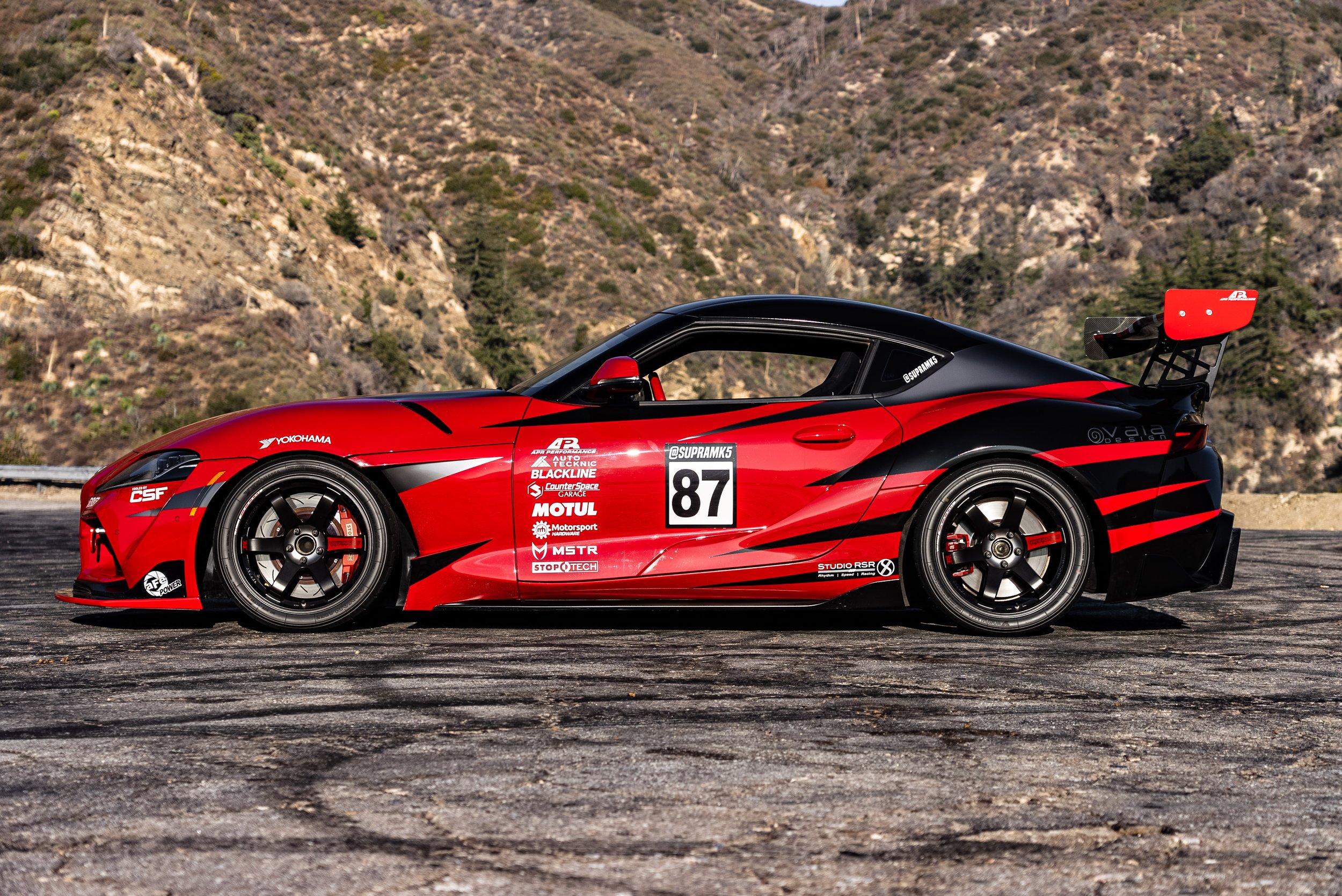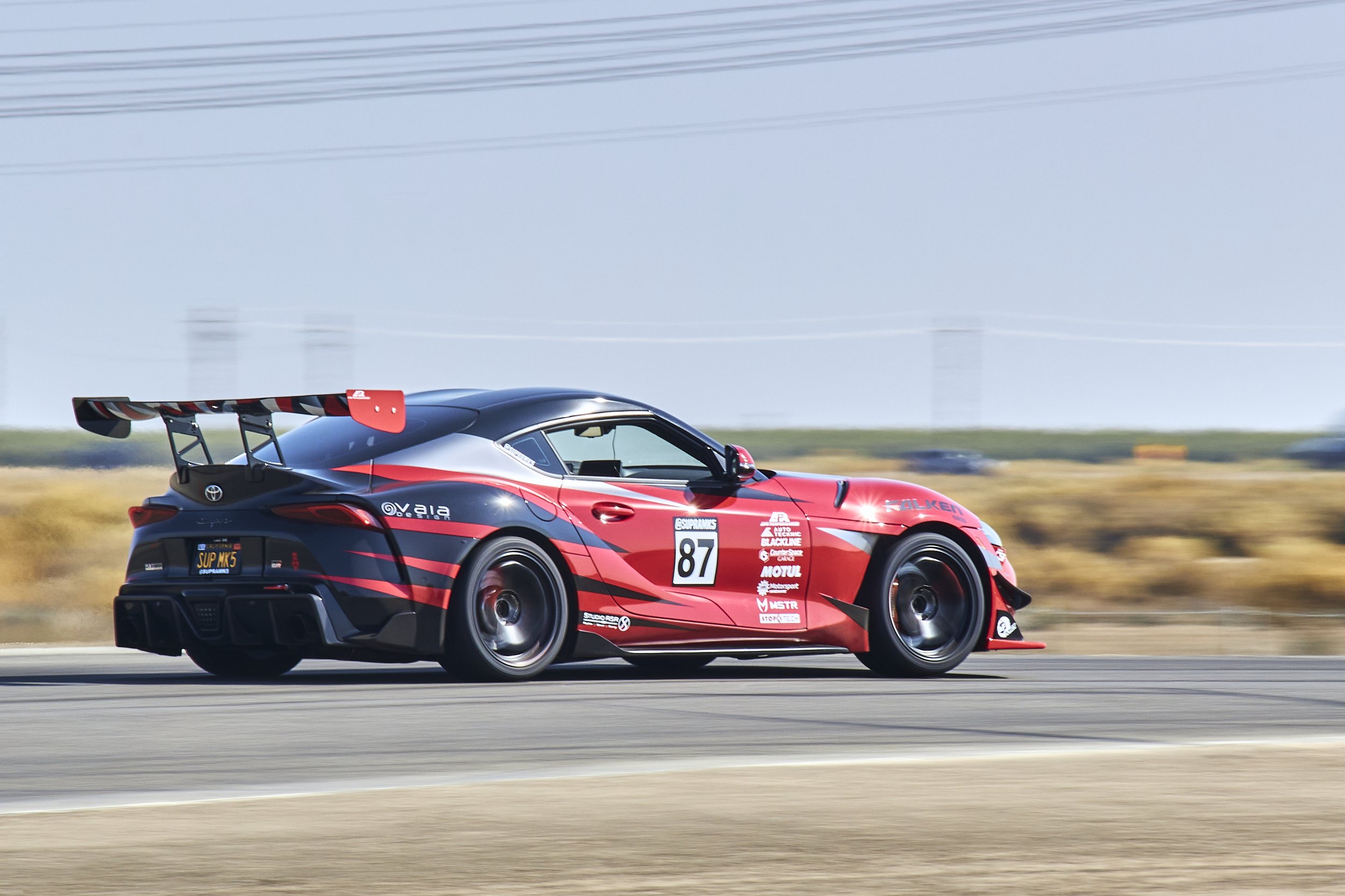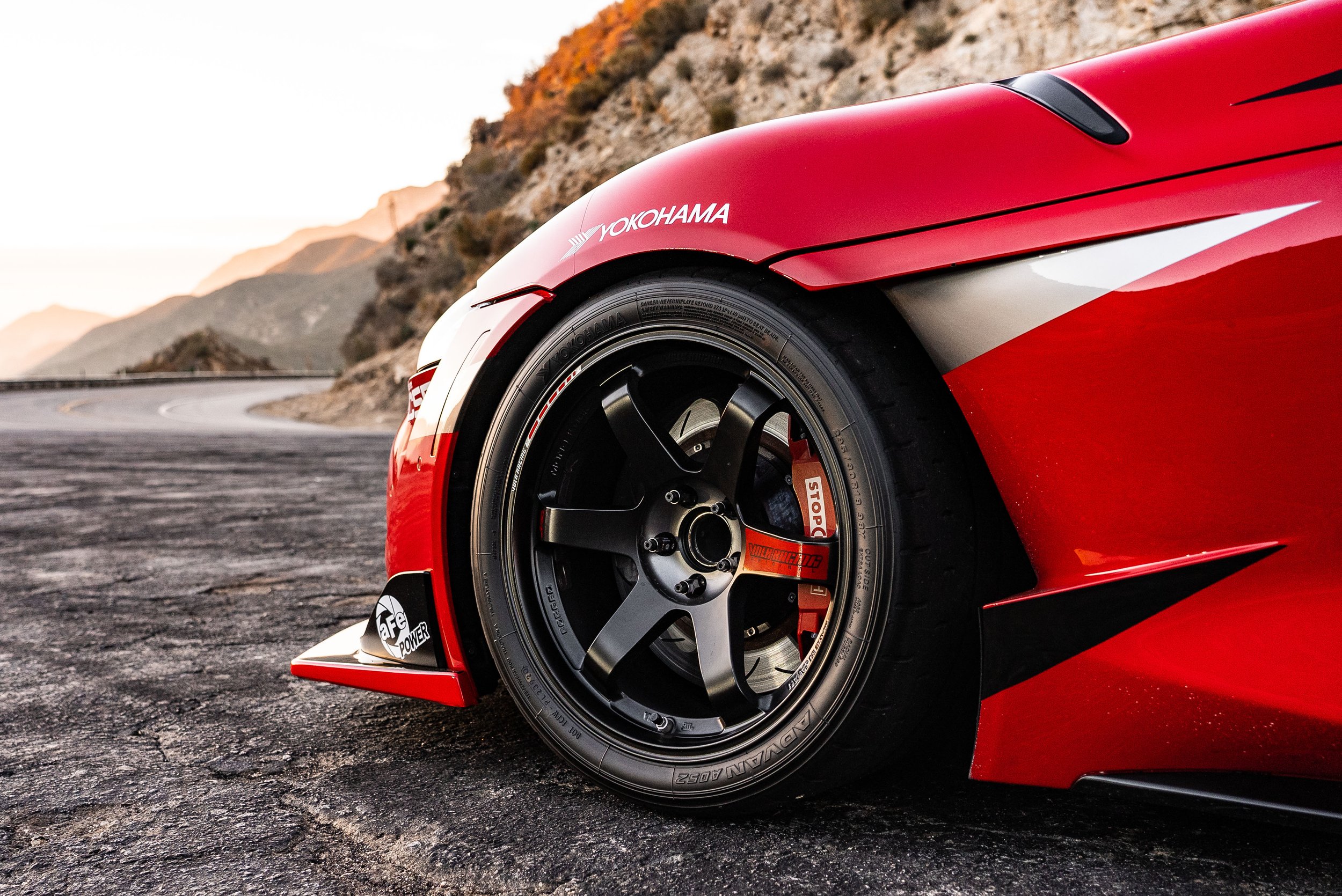Jerel's MKV Supra: Pressing the Easy Button
Photo credit: FEEND Media
Quite a few people consider the MKV Supra a little too competent. “It’s like pressing the easy button,” some like to think. Perhaps it is. It has all the assets needed for circuit performance, it responds well to modifications like a Supra should, and it benefits from an ever-widening aftermarket.
While some might be too eager to dismiss this paddle-shifted, powerful, and stout GT car, any self-respecting and inquisitive tuner-track rat has to do a little digging to discover why there’s been so much fuss surrounding it. Perhaps its competence removes the driver from the equation somewhat, but is that the car’s defining feature? Whatever its real character is, the Supra’s undeniable potential warrants a thorough inspection.
Jerel Natividad’s Renaissance Red Supra might be one of the better examples of the car’s approachability. This is for two reasons.
One: Jerel’s previous track cars—a CRX, a Miata, and an FR-S—were all momentum cars. Two: He’s only used bolt-on modifications to bring out the full potential of the Supra. True, the list is long, but these off-the-shelf items never caused much frustration. Simple, straightforward, and super effective, this Supra demonstrates just how quickly one can be made into a capable track car without cursing, scouring forums, or throwing wrenches.
They say Walt Disney used to have one unusual way of interviewing. He’d take the applicant out to lunch, and if they added salt or pepper to their food before trying it, he’d probably cut the lunch short. Why? He wanted employees who were open to new experiences. Jerel’s a little like Walt in that he knew that this car had good bones and he had to understand them before bolting on go-fast parts.
Despite the temptation to slap on a lot of mods before tracking this tuner car, he had to experience what it had to offer straight out of the box. He could appreciate its broad powerband, its engine response, and its willingness to rotate. Despite its obvious size, its 97” wheelbase helps it turn into most corners with surprising alacrity.
An APR splitter helps the sharpen the Supra’s prominent nose.
However, that urgency came with one serious setback: nervousness at higher speeds. His first impressions of the car were favorable, but the potential of the car requires some bolt-ons to realize. With Eibach springs, Yokohama V601 tires, and AFe’s intake and exhaust, he had a much better car that, above all other improvements, showcased the punch and power of the B58 powerplant.
So, for a little more tractability, he had Counterspace Garage tune the motor to soften the power delivery, specifically in the midrange. With a usable 400 horsepower at the rear wheels and much steadier rear in the quick bends, Jerel had forgotten about all awkward adjustments one must make when jumping from torqueless lightweight to overpowered grand tourer.
The big wing quells the stock Supra’s habit of dancing nervously at higher speeds.
The increase in speeds forced Jerel to address two areas: aerodynamics and safety. A bolt-in four-point cage from Studio RSR and a pair of Bride Zeta III seats for the latter, and an APR GTC300 rear wing and splitter for the former.
Those modifications and a more aggressive engine tune from BM3 were all he felt necessary to get the car into fighting shape. Six months after buying the car, he entered Global Time Attack at Buttonwillow, joined another nine drivers in the Enthusiast Class, and finished second. Following that stellar result, the organizers decided to ban the Supra from that class.
Spurred on by the controversy, Jerel decided to set his sights higher: he would realize more of the Supra’s potential and shake things up in Street Class. But before he could keep climbing, he had to deal with the climbing engine temperatures. More power was on the horizon, and he couldn’t see the sense in splurging for a bigger turbo if heat soak was shortening his sessions. After adding a radiator, a transmission cooler, and a heat exchanger from CSF, he could put those worries aside. Now, all that’s needed for all-day lapping in the middle of summer is a single cooldown lap.
Like a Supra should, a few more engine mods nearly doubled the output. A Pure800 turbo, a Red Star catless downpipe, port injection, an ECUTEK tune, and a tank full of E85 yielded 600 horsepower, but it became clear that the factory ZF was at its limit. He sent it off to Pure Drivetrain solutions for fortification. Now, even at high boost, the gearbox handles whatever the engine throws at it.
To put that additional power to the ground, Jerel made some major adjustments to the Supra’s footwork. With most of the SPL arms available for the Supra, a set of KW Clubsport coilovers, and a wider set of Rays TE37s wrapped in 285/30-18 Falken RT660s.
At this stage in the Supra’s development, it’s fair to say it really shares nothing with his former track toys. Still, he hasn’t had to alter his driving style much, apparently. The frpnt end was already eager with the factory suspension setup, but the SPL arms have contributed to the sense of urgency. Then, aided by 6-piston Stoptech big brake kit paired with CSG C21 brake pads, the 3,400-pound GT stops with the same consistency of his lighter cars.
Where the changes are most noticeable are with engine calibration, power application, and braking distances. Greater weight and more power requires he begin his braking zone a little earlier, and, of course, he can’t stand on the throttle in second-gear corners like he could with his Miata.
It’s the complexity of the Supra, however, which represents the greatest difference. “We had to recode so many sensors to keep the car from freaking out when we started pushing. Also, you don’t get to drive it fast before pushing a lot of buttons. It is not what you’d call an analog car.”
“It really doesn’t feel much bigger than the FR-S,” he said.
Those gizmos offer a great deal of comfort and civility, however, so they will be retained. For that reason, he’s not keen on stripping the interior or hacking up the car to shed weight. Instead, he’ll try and add more; wider tires and a more powerful fuel system to help avoid any fuel starvation. The bump in traction from a set of 305-section tires and a better differential should give the Supra the straightline advantage it needs to compensate for its weight, which, for a streetable track car, sounds about ideal. Comfort is paramount.
Considering the shortage of setbacks and the staggering performance unlocked with simple bolt-on modifications, “comfortable” might be the best word to describe his ownership experience. There might be some who feel that its astounding powertrain preclude it from being as engaging a driver’s car as some others. Maybe that’s just sour grapes, but maybe they have a point.
Regardless of the answer, it’s fair to say that the Supra’s greatest strength, as Jerel’s example so clearly demonstrates, is its ease of use. If Supra owners can go really quickly without suffering much, is that so objectionable?
Come to think of it, it’s got another major strength: the ability to irritate all the masochists out there.









